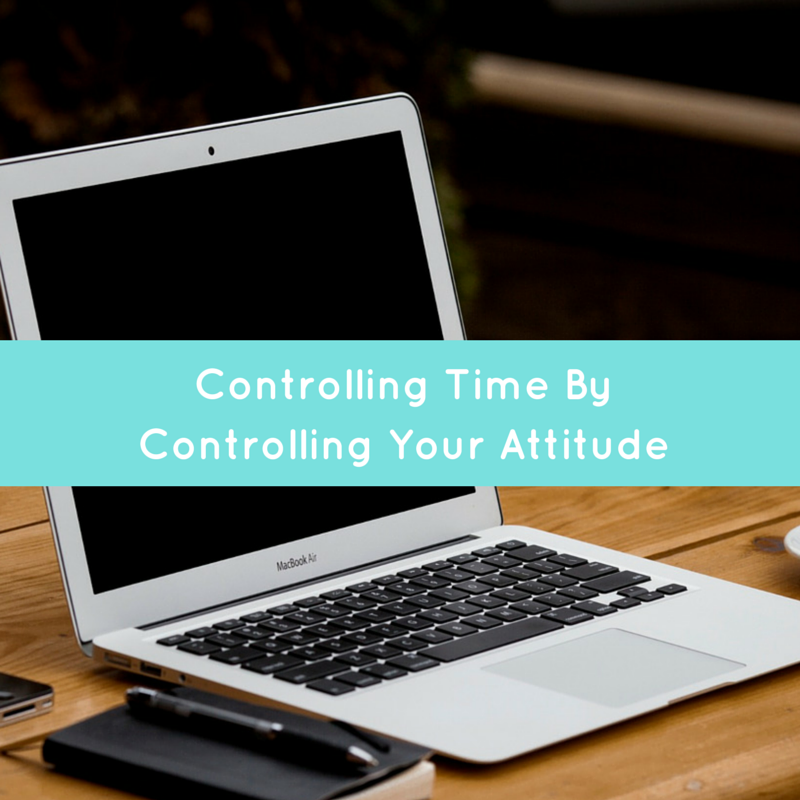Written by Whitney Westbrook
Time management is something we are constantly striving for. How much can we get done in a week, a day, an hour to reward us with the feeling of accomplishment? The constant strive is admirable because it shows we are ambitious. But what if for just a few minutes we could stop, slow down, and take some time to just…be? If we could change our attitude about time by taking some of it for ourselves we could be more efficient with the time we have left in the day.
How can we do this? Through changing our attitude towards time by practicing Mindfulness.
According to Psychology Today, Mindfulness is a form of meditation or, “A state of active, open attention on the present” (Mindfulness). Now, I know you’re thinking, “The last thing I need is to sit and do nothing when there is so much to be done with so little time!” I know, I know…you’re late for a very important date, but if you think about it, the main goal of time management lies in the ability to prioritize better while minimizing interruptions. What Mindfulness does is it allows you to stop, breathe, regroup and take stock of what really needs to get done. It’s easy to get caught up in all the things that seem urgent, but without taking a step back, it’s hard to see that a lot of these, “emergencies,” are actually robbing you of time and energy.
Mindfulness guru, Tom Evans, said it best in that, “[There is] a completely lateral way of getting more done in less linear time and that’s to change the speed and nature of your thoughts so you become more productive and creative” (Evans). When life seems like its racing at 90 mph and you have 1000 things on your to-do list, you begin to feel overwhelmed, stressed, and worry starts creeping up on you. These feelings leave you burned out, inefficient, and cause you to waste more precious time—the exact opposite of your intentions. By slowing things down, the mind takes on a more relaxed manner and is then able to deal with one thing at a time “head on” (see what I did there?) in a more effective manner.
Not convinced that Mindfulness works yet? Oh let me count the ways it does…or count at least three:
- Mindfulness teaches us to calm down by breathing more slowly. Ever been in a stressful situation and noticed you had kind of stopped breathing? That’s because you’re body is reacting in a fight-or-flight manner. The same reaction your body would give off if you were facing a tiger happens when you’re stressed over that paper due in 20 minutes that you have yet to start. Your body produces adrenaline and other chemicals so you can fight or run away from the tiger…or your paper—survival! What Mindfulness does is allows you to stop, breathe, and slow down your thoughts to remind you that you’re not being chased by a tiger and that you’re paper is actually due tomorrow (What Happens to Your Body When You Are Stressed?).
- Meditation gives you, “me time.” It allows you to become more relaxed and notice the little things in the present (Evans). You’ll notice after just a brief five minutes of quiet time, sitting with your breath, that you’re more aware of the little things you missed before because your mind was preoccupied with your to-do list.
- Mindfulness allows your mind to conquer one thought at a time. Your brain was designed to handle one thought at a time and yet we try to multi-task with 10 thoughts. According to Forbes, multitasking requires a lot of brainpower to accomplish things with a brain that can’t take in two simultaneous streams of information and encode them into short-term memory (Merrill). If the information doesn’t make it to short-term memory, guess what? It doesn’t make it to long-term memory. You’re burning brainpower getting things done for a superficial high of accomplishing or doing something you won’t even remember you did later. Don’t believe me? Think about what I’ve just said and notice that this thought replaced the one you were just thinking. See what I mean? You’re not meant to think about a million things at once. Bummer. Instead, maybe a little meditating could help you conquer one thought at a time successfully that you could recall later.
So now that we see the benefits of Mindfulness meditation, how do we incorporate it into our busy lives without uprooting too much? Meditating doesn’t have to be sitting on a cushion for hours on end. It doesn’t even have to consist of sitting in the dark and chanting, “Om.” You can focus on the present moment as you walk, eat, or even wash the dishes. Mindfulness can also consist of 5-10 minutes of quiet time to focus on nothing more than…the breath (Nauman). Another form of meditation consists of sitting, focusing on the breath, and then moving your focus on to the entire body—noticing the comings and goings of sensations without judgment. And if your mind wonders, which it will, gently guide it back to the breath and try again. The whole purpose of these exercises is to allow the mind to rest on the breath without any other thoughts trying to intrude. Just be still.
There are many other forms of Mindfulness meditations that you can learn about online or…in our very own Trojan backyard! Intrigued with Mindfulness? USC will hook you up with many wonderful classes to help guide you out of the mayhem and into the present moment. You can sign up for any of these classes by visiting mindful.usc.edu. As a follower of the Mindfulness practice myself, I can tell you that I may not be Wonder Woman (yet), but Mindfulness has allowed me to learn what matters, what doesn’t, and how to live in the present moment.
So what do you have to lose? If the current racing around in a million directions is working for you, keep on keeping on, but if it’s not floating your boat, maybe take some time to live in the present and be Mindful.
It’s as famous American cartoonist once said, “Yesterday’s the past, tomorrow’s the future, but today is a gift. That’s why it’s called the present.”
References:
Evans, Tom. “Five Mindful Time Management Hacks.” Tom Evans: New Magic for a New Era, 7 Mar. 2014. Web. 11 Mar. 2015. <http://www.tomevans.co/2014/03/07/five-mindful-time-management-hacks/>
Merrill, Douglas. “Why Multitasking Doesn’t Work.” Tech. Forbes. 17 Aug. 2012. Web. 11 Mar. 2015. <http://www.forbes.com/sites/douglasmerrill/2012/08/17/why-multitasking-doesnt-work/>
“Mindfulness.” Psychology Today. Web. 11 Mar. 2015. <https://www.psychologytoday.com/basics/mindfulness>
Nauman, Emily. “Short on Time? Try Mindfulness.” Greater Good: The Science of a Meaningful Life, 15 Oct. 2013. Web. 11 March 2015. <http://greatergood.berkeley.edu/article/item/Short_on_time_try_mindfulness>
“What Happens To Your Body When You Are Stressed?” Successful Aging. Web. 11 Mar. 2015. <http://www.successfulaging.ca/programs/stress/07.html>




